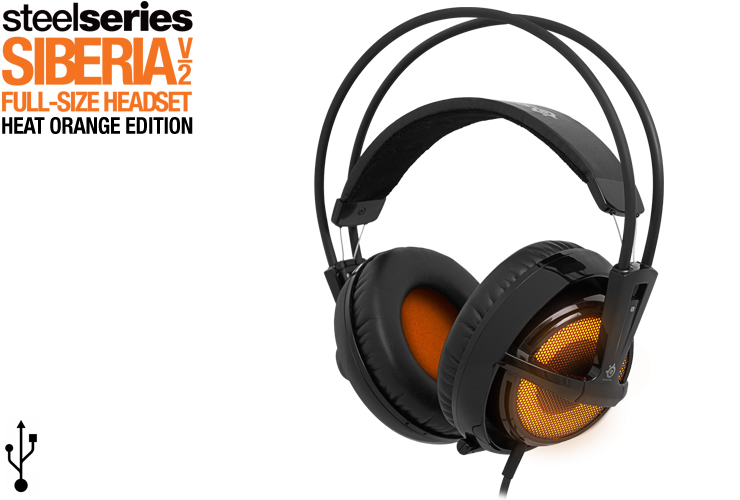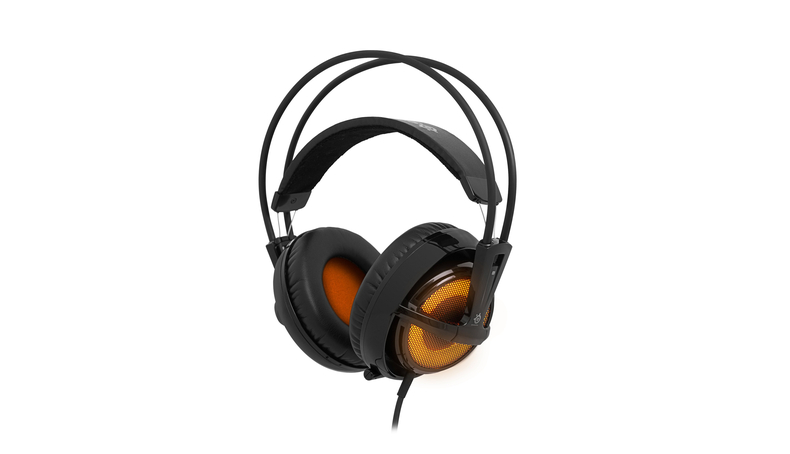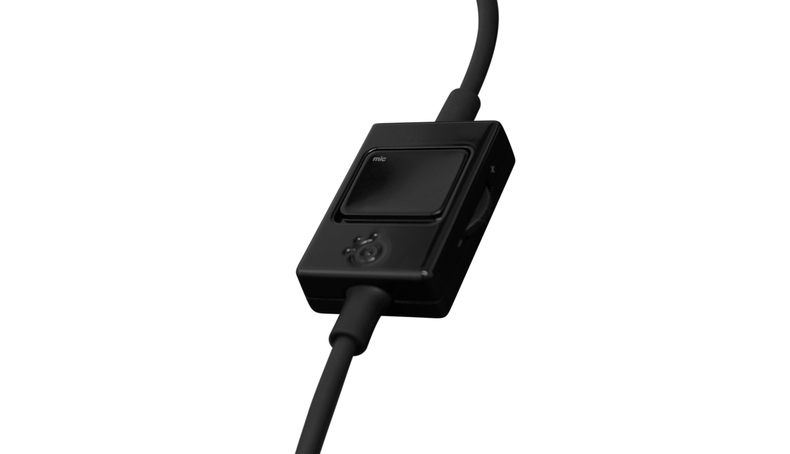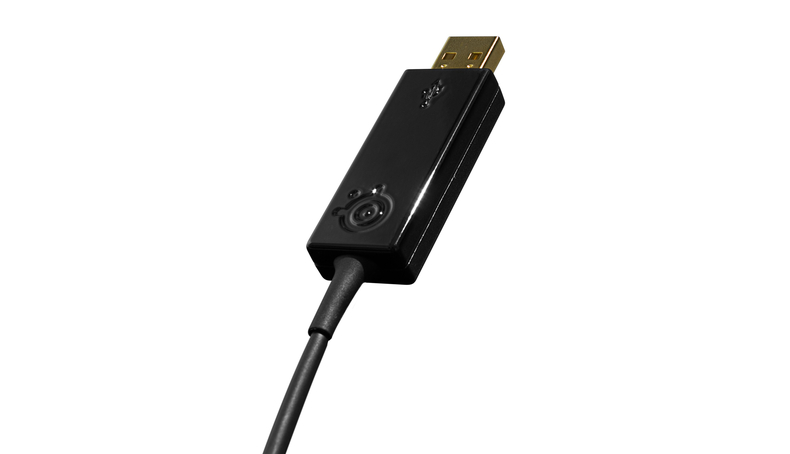I’ve never really been one for headsets. Rather than forking out for something expensive and isolatory, I happily used some second-hand Logitech PC Speakers, which I twiddled to get some extra beef and turned to 11. Yes, they were a bit crude and visually repulsive, but they were functional and they were mine. I also had a second-hand, mostly broken Turtle Beach headset for when I boldly ventured online, albeit for short, slightly uncomfortable periods.
So when I received my SteelSeries Siberia V2 Heat Orange PC Headset, whilst admittedly excited, I had no idea how easily I’d take to them. I was also slightly worried about how easily a premium integrated USB headset would interact with my PC’s existing sound card, and whether I’d be spending hours configuring the two to work in harmony. With 50mm Driver units, over-the-head suspension, a frequency response of 18-28000 Hz and a powerful integrated sound card, they look great on paper, but how do they sound? Without further ado, after five straight days of near-constant usage, here are my thoughts.
Design
The first thing anyone looks at when choosing a headset is, of course, the headset itself! With an aesthetically pleasing black and orange design and a high-quality glossy finish, they certainly look the part with an arguably industrial style. Build quality is fantastic, with no part feeling flimsy or insubstantial. The cups, made of leather and sound-dampening foam both look and feel great around the ears, without being stifling, sweaty or too warm (something I’ve found in the past with fully closed headsets). They’re big enough to completely encompass even the largest of ears (though Prince Charles was unavailable for comment), whilst also being light enough to be comfortable for long sessions. As a test, I sat for seven hours straight wearing the Headset. By the end of my lazy day I can happily report that my ears were just as comfortable as they were when they were applied.
When I’ve previously had problems wearing headphones for long periods, I was astonished. I think that the comfort can be attributed to the free-form, elasticated head-band design. The over-head approach allows easy fitting for even the most bloated of heads with no adjustment necessary whilst also lowering the weight substantially compared to other similar gaming headsets.
The big, title additions to the Siberia V2 design are the LED’s in the earphones themselves. Bright, pleasing, crazily badass. Whilst it’s a shame you can’t see them when worn, the simple knowledge that they’re there is enough to make you feel good.
The cable (1.2m), with built-in volume control and vocal-mute does seem unusually short for a headset of this calibre, though the included USB extension lead makes it up to an acceptable 3 metres. However, this shortness in hardly an issue when PC gaming usually happens less than 2 metres from the computer.
Sound
What’s the most important aspect? Sound of course!, and again the Siberia’s do not disappoint. Whilst it’s hard to truly describe sound quality, it can be said that even the least impressive audio sounds crisp and clean through these, with deep, booming bass to boot. Thanks in part to the integrated card, the 7:1 virtual surround experience also shines, even in games not really optimised for such quality. Whilst not the same as having a full surround system in the room, it’s a convenient, immersive alternation which feels so good that I’d be very reluctant to go back to anything other.
Microphone
The mic is often the least impressive component of a quality headset, but fortunately it isn’t in this case. Hidden beneath the left cup, it pulls out easily on a flexible rod, retaining its shape well for consistent usage. The quality itself isn’t bad either; high quality for good communication in the spur of the moment.
USB Sound Card & Software
Whilst most gaming headsets offer 3.5mm connections for use with a variety of different devices, these come with a simple USB connection, due to the integrated sound card. Whilst this means the headset can only be used with a PC it also means that the audio and virtual surround is managed by the headset’s technology itself, leading to a more consistent computing experience. It also allows for certain limitations to be completely bypassed in spectacular ways.
For me, the stand-out feature is the in-built function to change game-play volumes on the fly in response to voice communication. Tested in Planetside 2, the effect and background volumes dip when your allies speak to you, allowing clearer communication than most headsets allow. The Software also boasts impressive noise cancellation, and with the installation of SteelSeries Engine (http://steelseries.com/g/steelseries-engine) one can easily adjust Equalisation settings. The LED pulse and brightness can also be played with.
Finally, the ease of installation for the entire thing is incredibly quick and easy. I’ve previously had issues integrating certain programs, such as the original Mass Effect, with my computer’s own 5:1 sound card and other headsets. However, the SteelSeries worked literally out of the box, giving me a full 7:1 experience with no adjustment whatsoever; literally plug and play.
Conclusion
I’m a convert, no doubt about it! With fantastic sound and high build quality, I can’t recommend this highly enough. It’s wired, which may put off players who prefer to be able to use the bathroom or make a cuppa whilst talking to team-mates, but the simple yet elegant design is flawlessly executed and incredibly comfortable. Despite the Premium cost of around £90-£100, the comfort and quality speaks for itself. If you’re in the market for a high-end headset, you simply cannot do better for the price,
Disclaimer:All scores given within our reviews are based on the artist’s personal opinion; this should in no way impede your decision to purchase the game.












You must be logged in to post a comment.